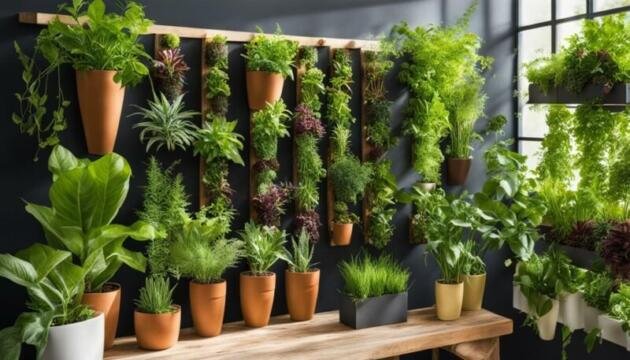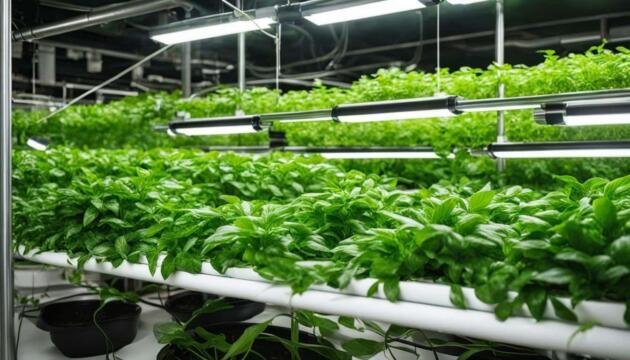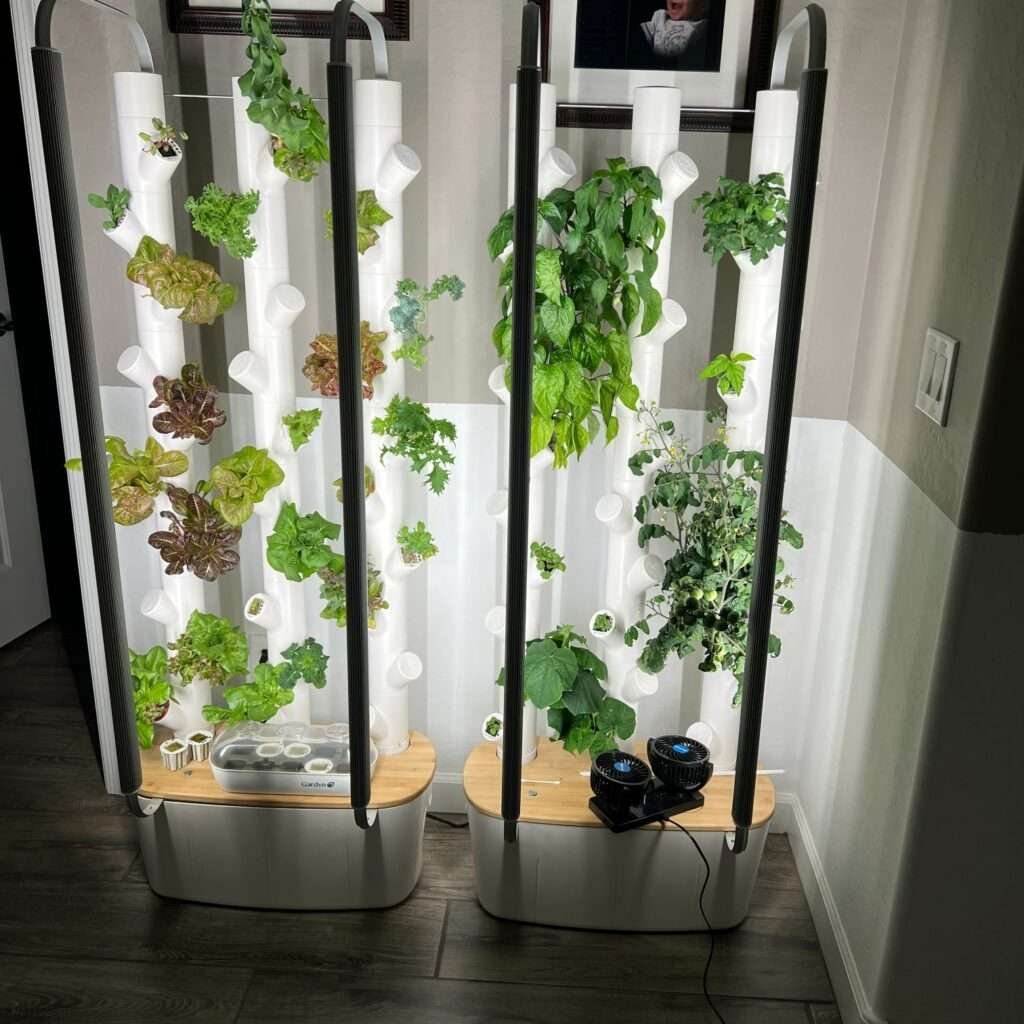
Unlock Savings: Save Money by Growing Food Indoors
Indoor gardening can save you money by providing fresh produce year-round, even in limited spaces.
Did you know that a $3 packet of seeds can produce up to 120 pounds of summer squash, 20 pounds of carrots, 8 pounds of green beans, and 5 pounds of lettuce?
Moreover, with just a small garden, you can easily grow over 300 pounds of fresh produce, saving up to $600 compared to store prices. The best part is that investing in seeds rather than starter plants can save you money upfront.
To maximize your savings, it’s important to plant vegetables and herbs that you already use or want to eat. By focusing on the produce you love, you’ll minimize waste and ensure that your indoor garden is both practical and cost-effective.
Key Takeaways:
- Invest in seeds to save money on starter plants
- Plant vegetables and herbs that you already use or want to eat
- Make your own compost to save on fertilizer costs
- Look for affordable gardening implements or find them secondhand
- Consider canning or pickling your veggies for the winter months
With these tips, you can save money and enjoy the fulfillment of indoor gardening. Get started now and reap the financial rewards!
The Financial Benefits of Indoor Gardening
Indoor gardening offers numerous financial benefits, allowing you to grow your own food without breaking the bank. With a small space, you can yield a significant amount of fresh produce, saving money on grocery store expenses. By investing in a $3 packet of seeds, you can produce up to 120 pounds of summer squash, 20 pounds of carrots, 8 pounds of green beans, and 5 pounds of lettuce. Just imagine the savings!
Moreover, with just a small garden, you can easily grow over 300 pounds of fresh produce, saving up to $600 compared to store prices. The best part is that investing in seeds rather than starter plants can save you money upfront.
Canning or pickling your veggies for winter enjoyment and waste reduction is a fun and budget-friendly way to preserve your harvest. Choose affordable seeds and seek local nursery advice for a successful indoor garden.
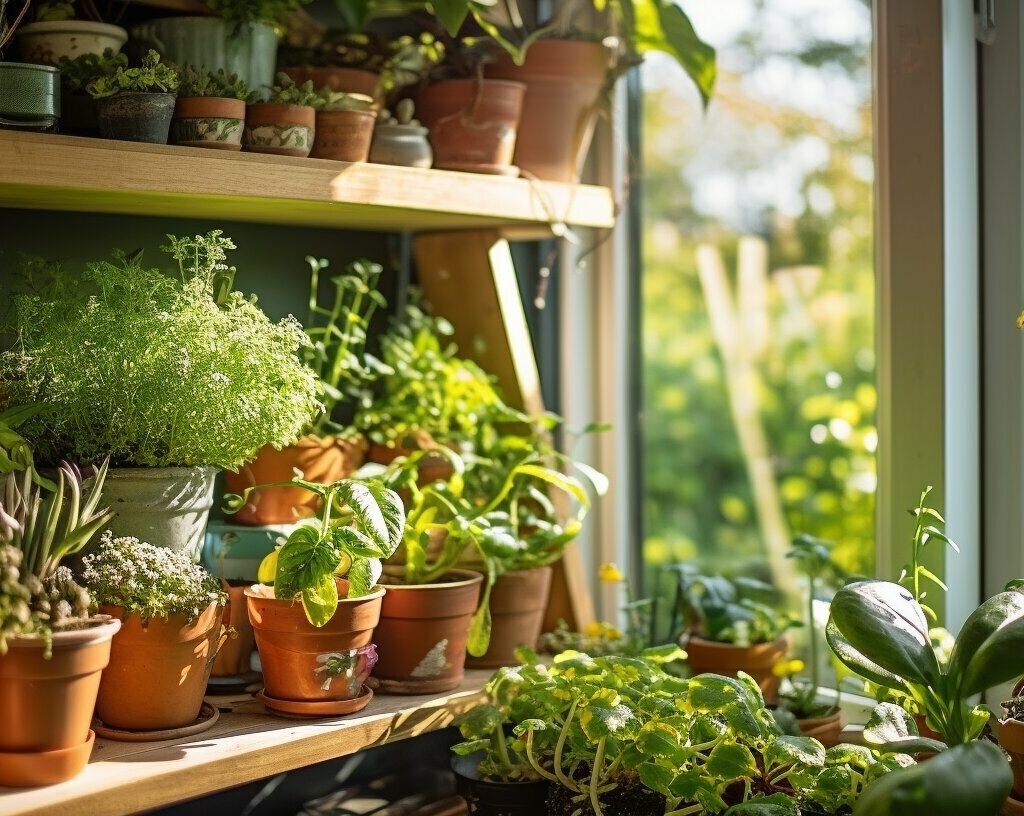
Start with Seeds: A Wise Investment
Instead of purchasing expensive starter plants, opt for seeds to maximize your indoor gardening savings. Investing in seeds allows you to take advantage of their affordability and potential for a higher yield. A $3 packet of seeds can produce an impressive amount of fresh produce, giving you a bountiful harvest for a fraction of the cost.
Let’s take a look at some factual data to understand the savings you can achieve through seed gardening. With just a small indoor garden, a single packet of seeds can yield up to 120 pounds of summer squash, 20 pounds of carrots, 8 pounds of green beans, and 5 pounds of lettuce. In total, a small garden can provide over 300 pounds of fresh produce, which translates to savings of up to $600 when compared to grocery store prices.
Indoor gardening is a cost-effective way to enjoy a variety of vegetables and herbs. When choosing what to plant, opt for vegetables and herbs that you already use in your daily meals or enjoy eating. This way, you can make the most of your indoor garden by growing produce that you will truly value and utilize.
If you’re looking for additional savings and efficiency, consider exploring indoor hydroponics. Hydroponics is a method of growing plants without soil using a nutrient-rich water solution instead. This technique allows you to grow plants faster and with higher yields, making it a cost-effective option for indoor gardening. With hydroponics, you can save on soil costs and optimize water usage, resulting in healthier plants and significant savings over time.
| Indoor Gardening Tips for Success |
|---|
| 1. Choose a variety of plants that thrive indoors, such as salad greens, herbs, scallions, radishes, and microgreens. |
| 2. Use pots or a seeding tray with good, nutrient-rich soil to support plant growth. |
| 3. Water consistently, but avoid overwatering. Monitor the soil moisture levels and adjust accordingly. |
| 4. Provide at least six hours of sunlight per day. If natural light is limited, use grow lights to supplement. |
| 5. Prune herbs correctly to promote new growth and maintain compact, healthy plants. |
Use these tips and hydroponics for cost-effective indoor gardening. Enjoy the satisfaction of homegrown produce and maximize your savings with careful planning.
Plant What You Need and Love
To save money while growing food indoors, focus on planting vegetables and herbs that you regularly use and enjoy. By doing so, you can maximize the value and satisfaction of your indoor garden. Choose seed varieties that are affordable and seek recommendations from local nurseries to find the best options for your needs.
Plant what you love and need to prioritize your gardening efforts and resources. Focusing on your regular meal ingredients eliminates waste and reduces grocery store expenses.
| Veggie | Amount per $3 packet of seeds |
|---|---|
| Summer squash | Up to 120 pounds |
| Carrots | Up to 20 pounds |
| Green beans | Up to 8 pounds |
| Lettuce | Up to 5 pounds |
With just a small investment in seeds, you can yield an incredible amount of fresh produce. This can result in over 300 pounds of homegrown vegetables, saving you up to $600 compared to grocery store prices.
So, be intentional about your indoor garden and focus on what you love to eat. You’ll not only save money but also enjoy the satisfaction of harvesting and cooking with your own homegrown herbs and vegetables.
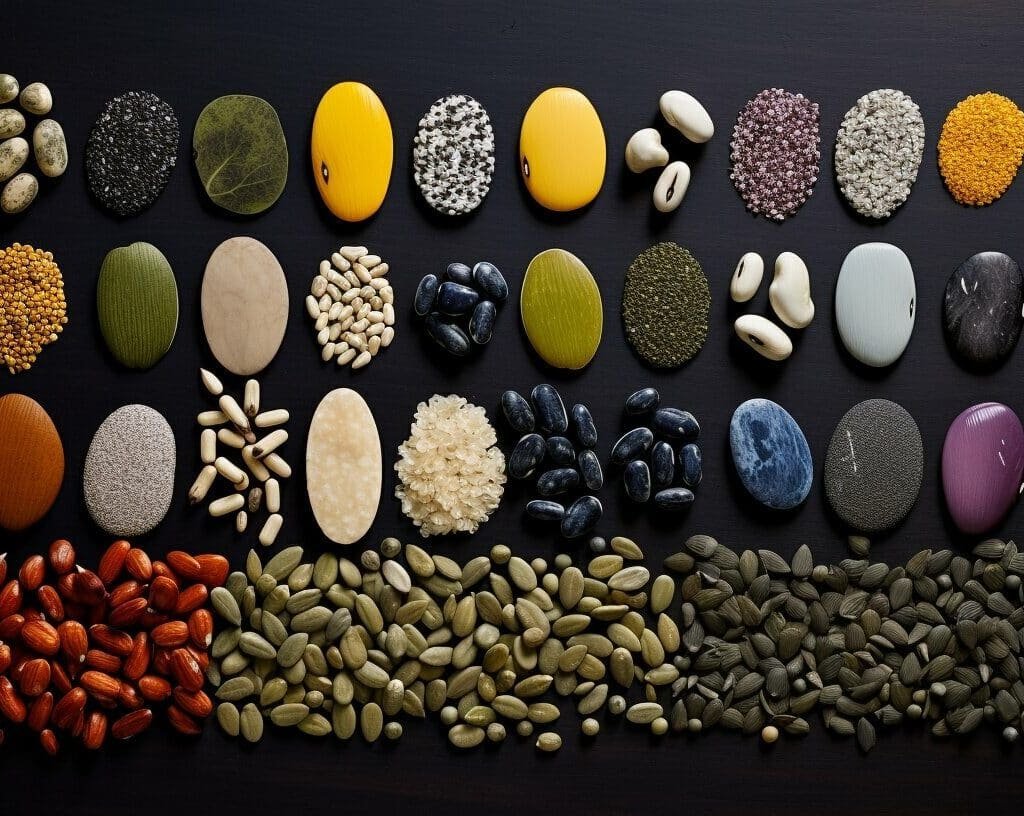
Make your own compost with kitchen scraps for a cost-effective way to provide nutrients to your indoor garden, saving on expensive fertilizers.
Start by collecting kitchen scraps such as fruit and vegetable peels, coffee grounds, and eggshells. Avoid using meat, dairy, or oily foods, as they can attract pests. Combine these scraps with dried leaves, grass clippings, or shredded newspaper to create a balanced mixture.
Place the compost mixture in a compost bin or a designated area in your home. Turn the compost regularly to aerate it and accelerate the decomposition process. Within a few months, you’ll have rich, dark compost that can be added to your indoor garden soil.
| Items to compost: | Items to avoid: |
|---|---|
| Fruit and vegetable scraps | Meat and dairy products |
| Coffee grounds and filters | Oily foods |
| Eggshells | Plants treated with pesticides |
| Dried leaves and grass clippings | Large branches or logs |
| Shredded newspaper | Coal or charcoal ashes |
| Tea bags |
Composting not only helps save money but also reduces waste and benefits the environment. By creating your own compost, you can promote sustainable gardening practices while nourishing your indoor plants.
Tips for Successful Indoor Composting:
- Keep a small container in your kitchen to collect compostable materials conveniently.
- Avoid adding large amounts of one type of material to maintain a balanced mixture.
- Add a layer of soil or finished compost to each layer of kitchen scraps to introduce beneficial microbes and accelerate decomposition.
- Monitor the moisture level of your compost. It should feel like a damp sponge, not too wet or dry.
- If you encounter any unpleasant odors, add more dry materials or turn the compost to improve aeration.
Affordable Gardening Implements
Starting indoor gardening doesn’t need to be expensive; affordable gardening tools are available. Consider these budget-friendly options:
- Hand Trowel: A small hand trowel is a versatile tool that will come in handy for planting, transplanting, and digging in your indoor garden. Look for one made of sturdy stainless steel for durability.
- Pruning Shears: Pruning shears are essential for maintaining the health and shape of your indoor plants. Opt for a pair with sharp blades and a comfortable grip, so you can easily trim and shape your herbs and vegetables.
- Watering Can: A good-quality watering can is a must-have for any indoor gardener. Look for one with a long spout and a comfortable handle for easy watering. Consider choosing a watering can with a built-in spray nozzle for more precise watering.
- Plant Labels: Keep track of your indoor garden by using plant labels. These inexpensive markers can be easily inserted into the soil and will help you identify your different herbs and vegetables.
Remember, you don’t need to purchase every gardening tool on the market. Start with the basics and add to your collection as you gain more experience and expand your indoor garden. By choosing affordable options, you can save money while still having all the necessary tools for successful indoor gardening.
Table: Essential Gardening Tools
| Tool | Description |
|---|---|
| Hand Trowel | A small, versatile tool for planting and digging. |
| Pruning Shears | Used for trimming and shaping indoor plants. |
| Watering Can | An essential tool for watering your indoor garden |
| Plant Labels | It helps identify different herbs and vegetables in your garden. |
Use these budget-friendly tools to start your indoor garden. Invest in quality, long-lasting tools for successful indoor gardening. Get started, enjoy growing fresh herbs and veggies at home.
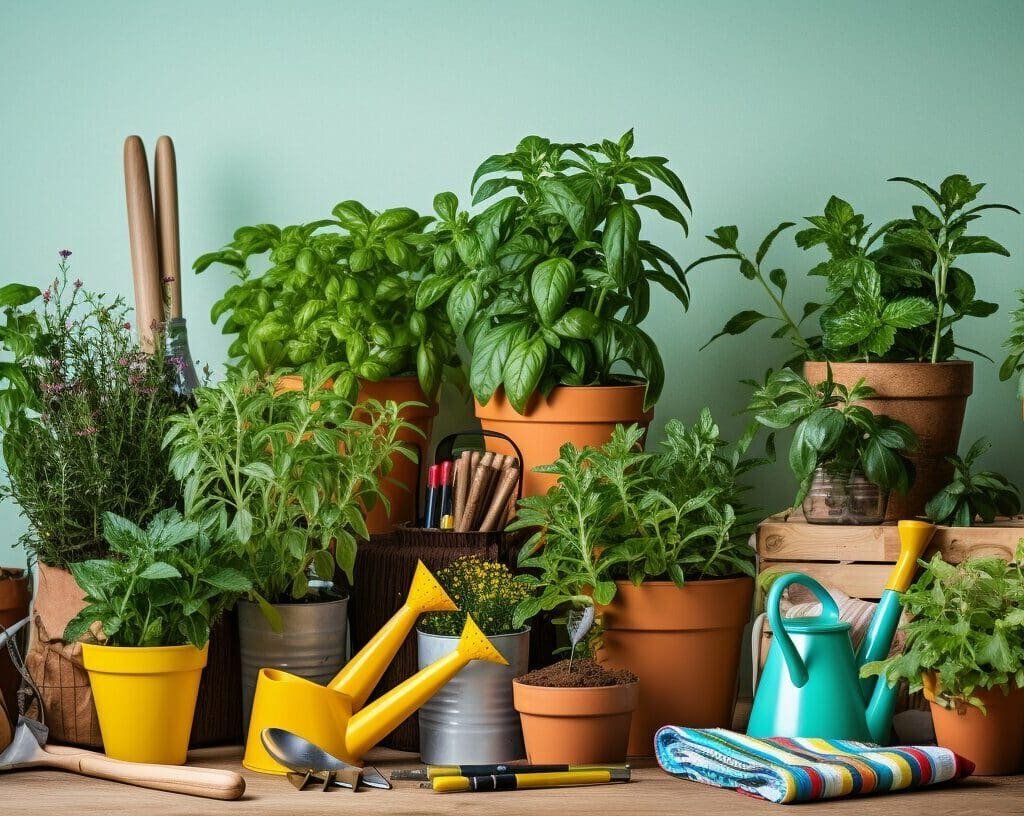
Preserve your indoor garden harvest by learning to can or pickle veggies. These age-old methods keep your homegrown produce fresh year-round, reduce food waste, and save on groceries.
Canning uses sterilized jars and heat to create a vacuum-sealed environment, preventing spoilage. Pickling involves preserving veggies in brine or vinegar for a tangy flavor
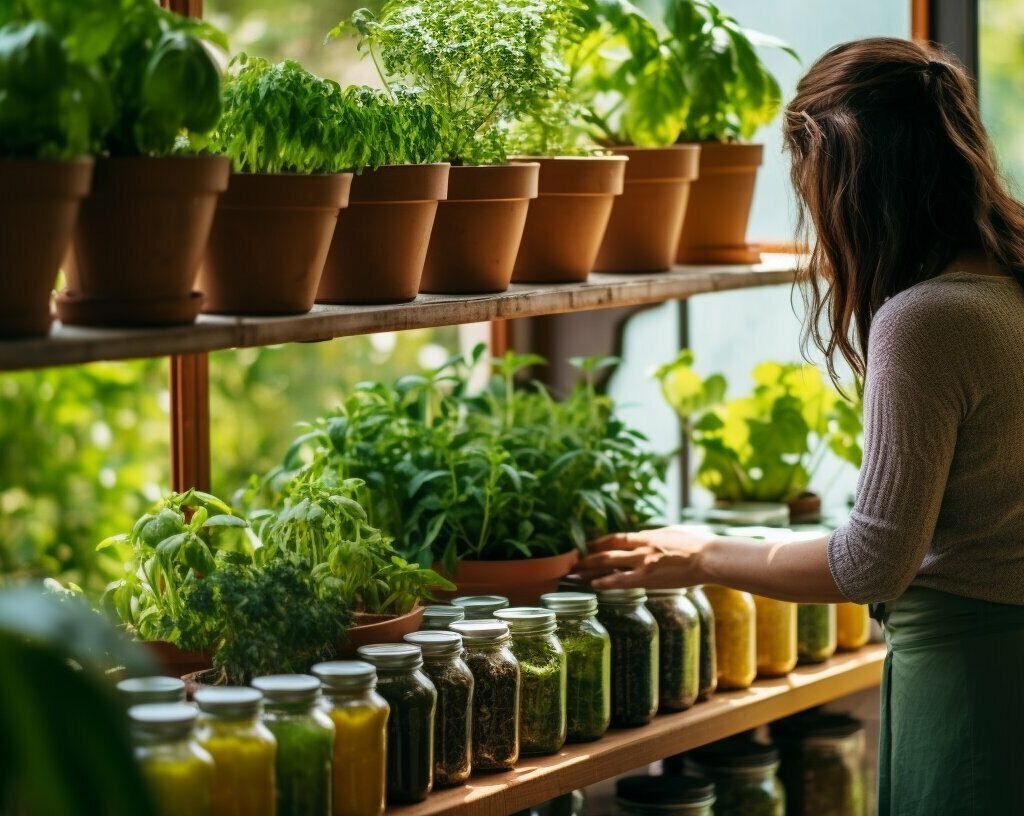
Canning and pickling your indoor garden harvest is a simple and rewarding process. With a few basic supplies such as jars, lids, and a large pot for boiling water, you can create your own pantry full of delicious preserved vegetables. It’s a great way to make the most of your indoor garden and ensure that none of your hard-earned produce goes to waste.
For beginners in canning and pickling, online resources and books offer step-by-step instructions and recipes. From pickled cucumbers to canned tomatoes, you have control over quality and ingredients for year-round, healthy, flavorful meals.
Choose Herbs Wisely and Opt for Kits
Save money on herbs by selecting the ones you use most often and considering convenient herb kits. By focusing on the herbs you frequently use in your cooking, you can ensure that your indoor garden provides you with a steady supply of fresh, flavorful herbs without breaking the bank.
One way to save money on herbs is to choose ones that you can use in a variety of dishes. For example, herbs like basil, parsley, and cilantro are versatile and can be used in numerous recipes. By selecting herbs that you use frequently, you can maximize the value you get from each plant.
| Herb Variety | Price (per plant) | Usage |
|---|---|---|
| Basil | $2.99 | Pasta, pesto, salads |
| Parsley | $1.99 | Soups, stews, garnish |
| Cilantro | $2.49 | Tacos, salsas, curries |
Another cost-saving option is to consider purchasing herb kits. These kits often include everything you need to start growing herbs, including seeds, soil, and containers. They are a convenient and affordable choice for beginners or those with limited gardening space. Herb kits are available in various sizes and can be tailored to your specific needs and preferences.
Save money on herbs by selecting the ones you use most often and considering convenient herb kits.
Select herbs wisely and use kits for a cost-effective supply of fresh herbs. Easily enhance your dishes with flavor and freshness for every meal.
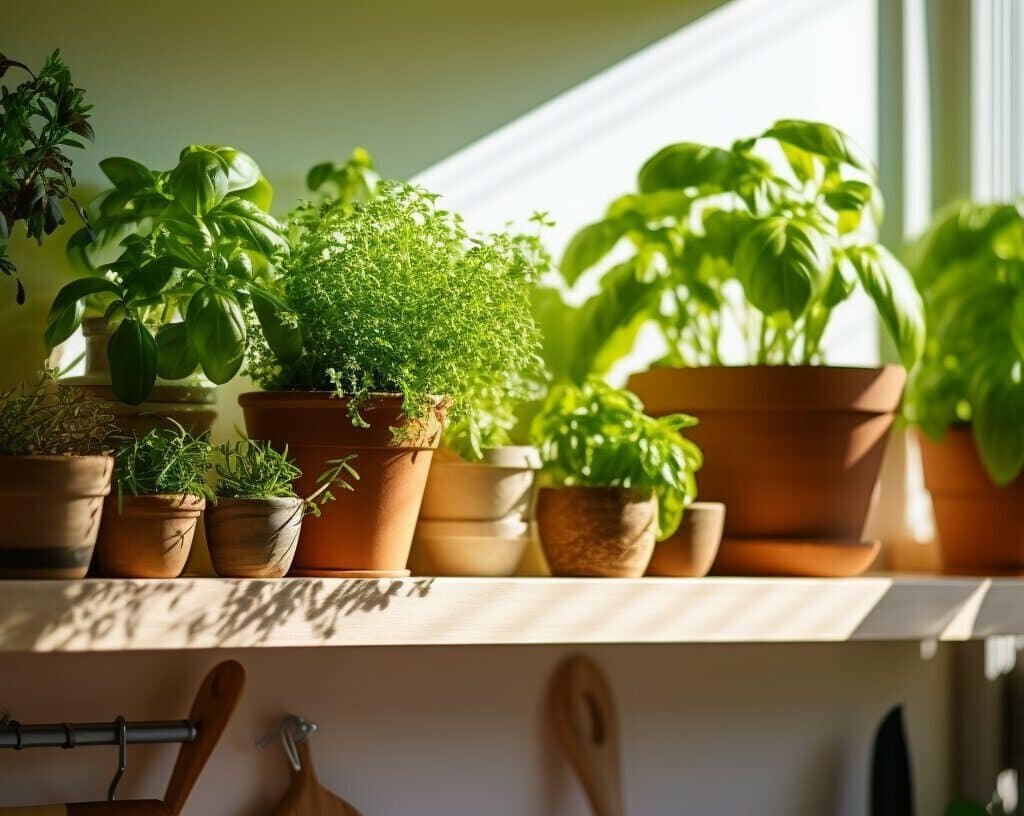
With a little planning and creativity, indoor gardening can be an affordable and rewarding way to enjoy fresh herbs year-round. So go ahead and start your own indoor herb garden, save money, and elevate your culinary creations with the vibrant flavors of homegrown herbs.
Indoor Gardening Tips for Success
Follow these indoor gardening tips to ensure success and maximize your savings. With a few simple strategies, you can enjoy fresh produce all year round and save money on groceries. Let’s dive in!
- Choose the right vegetables and herbs: When planning your indoor garden, focus on vegetables and herbs that you already use or want to eat. This way, you’ll save money by growing what you love and need. Consider planting salad greens, herbs like basil and mint, scallions, radishes, and microgreens.
- Invest in quality seeds: Starting with seeds is an excellent way to save money upfront. A $3 packet of seeds can yield an abundant harvest. Look for affordable seed varieties and seek recommendations from local nurseries. By growing your plants from seeds, you’ll have a greater variety of options and enjoy the satisfaction of seeing them sprout and grow.
- Create your own compost: Making your compost is not only an eco-friendly choice but also a cost-effective one. Instead of spending money on expensive fertilizers, have a compost bin or pile in your kitchen. Use kitchen scraps like fruit peels, coffee grounds, and vegetable trimmings to make valuable compost that will nourish your indoor plants.
- Focus on the essentials: For successful indoor gardening, you’ll need pots or a seeding tray with good quality soil, proper drainage, and adequate sunlight. Water your plants consistently, but be careful not to overwater them. Aim for at least six hours of sunlight per day, and if your space lacks natural light, consider using grow lights to supplement it.
Remember to prune your herbs correctly to promote growth and prevent them from becoming leggy. By trimming off the top leaves, you’ll encourage the plants to become bushier and produce more flavorful leaves.
By following these indoor gardening tips, you can enjoy the satisfaction of growing your own fresh produce while saving money in the process. Embrace the joy of harvesting and cooking with your homegrown herbs and vegetables. Indoor gardening allows you to take control of your food supply and enjoy the taste and quality of freshly picked produce all year round.
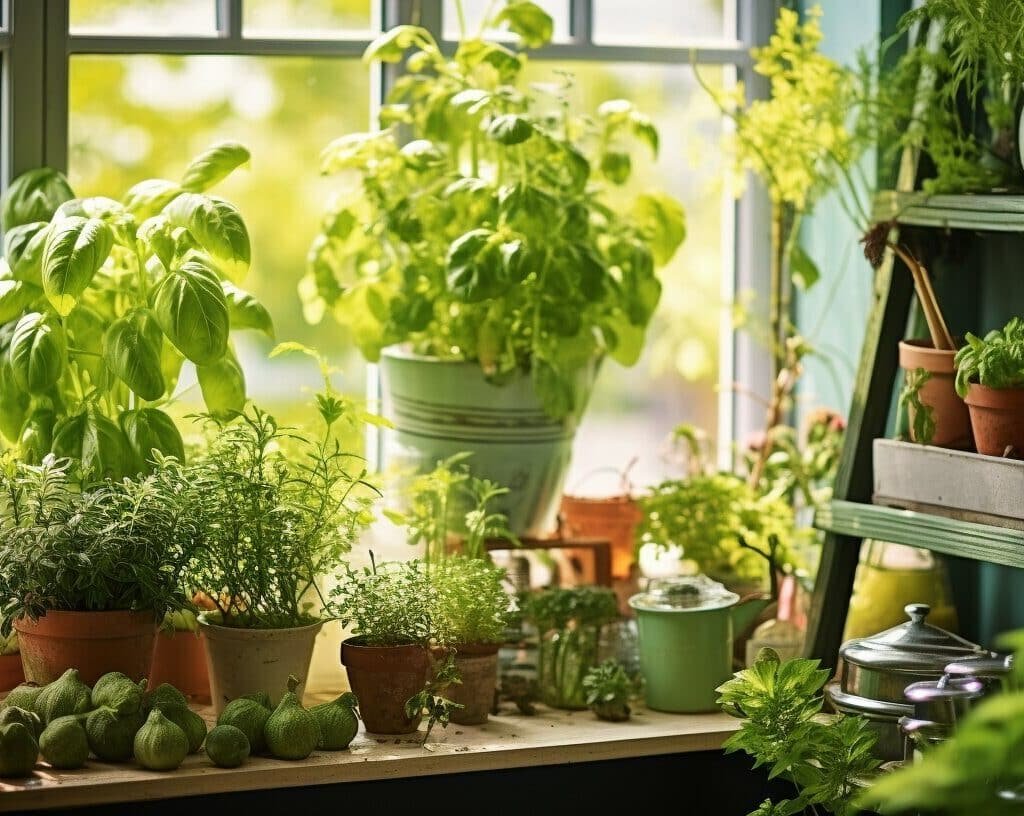
For more inspiration and guidance, check out the complete table below for a summary of the indoor gardening tips discussed in this article:
| Tips for Success | Seed Varieties | Composting | Essential Supplies |
|---|---|---|---|
| Choose the right vegetables and herbs | Invest in quality seeds | Create your own compost | Pots or seeding tray with good soil |
| Focus on what you love and need | Seek recommendations from local nurseries | Use kitchen scraps for composting | Adequate sunlight (at least 6 hours) |
| Proper watering and drainage | |||
| Nurture and prune herbs correctly |
Cutting Costs on Groceries and Shipping
Indoor gardening saves on groceries and shipping, providing satisfaction in cooking with homegrown herbs and veggies. It’s a cost-effective way to have quality produce, even in limited space.
To maximize your savings, plant vegetables and herbs that you already use or want to eat. This way, you’re not only saving money but also ensuring that you’re growing crops that you’ll truly enjoy. Look for affordable seed varieties and seek recommendations from local nurseries. They can provide valuable insights on what grows well in your area and can fit within your budget.
To further cut costs, consider making your own compost for fertilizing your indoor garden. It’s a sustainable and cost-effective way to nourish your plants without relying on expensive store-bought fertilizers. Simply collect kitchen scraps like fruit and vegetable peels, coffee grounds, and eggshells, and turn them into nutrient-rich compost. Not only will this save you money, but it’s also a great way to reduce waste.
When it comes to gardening implements, you can find affordable options or even score secondhand tools. Don’t let the cost of equipment deter you from starting your indoor garden. It’s possible to garden on a budget with a little creativity and resourcefulness. Additionally, consider canning or pickling your vegetables to preserve them for the winter months. This way, you can enjoy the fruits of your labor all year round and further maximize your savings.
| Indoor Gardening Tips for Cutting Costs on Groceries and Shipping | Benefits |
|---|---|
| Grow salad greens, herbs, scallions, radishes, and microgreens | Provides a variety of fresh produce at a fraction of the cost |
| Use pots or a seeding tray with good soil | Affordable and easy-to-find supplies for indoor gardening |
| Water consistently, but avoid overwatering | Prevents water wastage and saves on utility bills |
| Provide at least six hours of sunlight per day, or use grow lights if necessary | Reduces the need for expensive artificial lighting |
| Prune herbs correctly to promote growth | Ensures healthy plants without spending extra on replacements |
By implementing these indoor gardening tips and techniques, you can effectively cut costs on groceries, shipping, and gardening supplies. So why not give indoor gardening a try? Save money and enjoy the satisfaction of growing and eating fresh produce from your indoor garden.
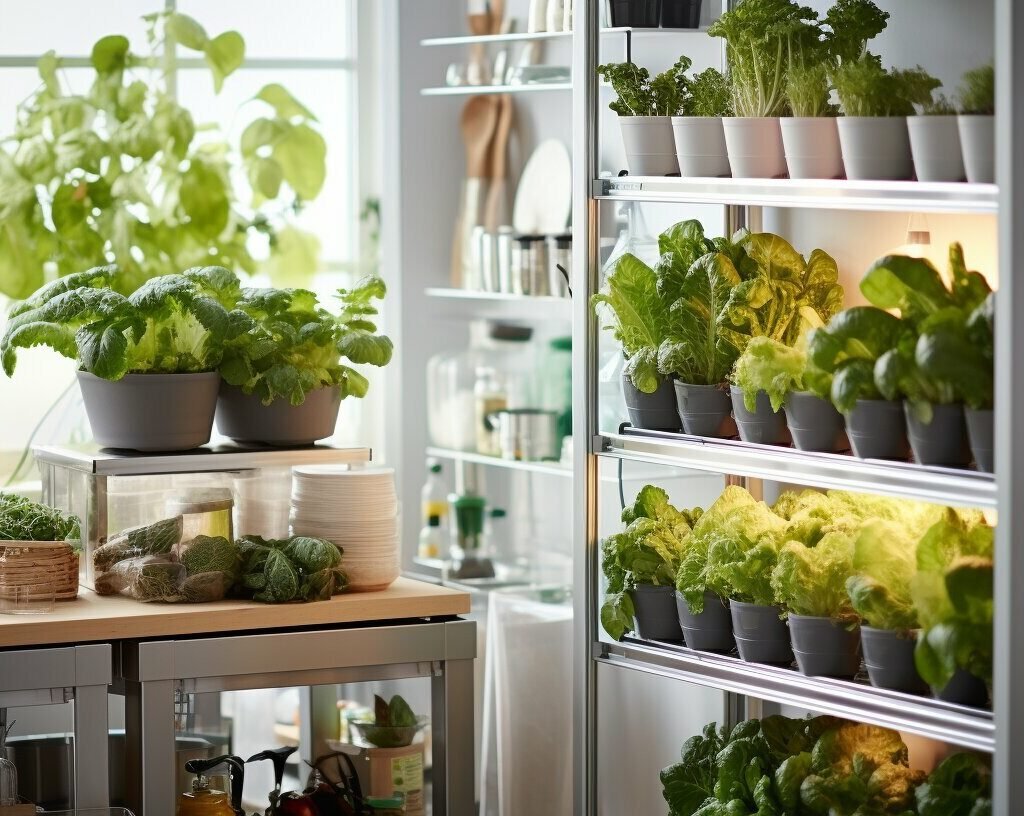
Conclusion
In conclusion, indoor gardening lets you save money, enjoy fresh produce, and experience the joy of cultivating your own garden, even in a small space. A $3 seed packet can yield over 300 pounds of fresh produce, saving up to $600 compared to store prices.
Furthermore, Investing in seeds rather than starter plants is a smart financial decision. Not only does it save money upfront, but it also allows you to choose the exact varieties of vegetables and herbs that you already use or want to eat. To further reduce costs, you can make your own compost from kitchen scraps, eliminating the need for expensive fertilizers. Look for affordable gardening implements or consider finding them secondhand to save even more.
Preserve your harvest by canning or pickling for winter savings. Stretch your gardening budget with affordable seeds and local nursery advice. For indoor gardening success, grow salad greens, herbs, scallions, radishes, and microgreens.
For successful indoor gardening, give your plants at least six hours of sunlight daily or use grow lights. Water consistently but avoid overwatering, and prune herbs for better yields. Indoor gardening saves on groceries, herb kits, and transportation costs, making it a sustainable choice for your budget and the environment.
Why not start indoor gardening? Save money, enjoy fresh produce, and experience the joy of cultivating your own garden. The fulfillment of growing and cooking with your own herbs and veggies is unmatched. Begin a small indoor garden today and reap the benefits!
FAQ
How much money can I save by growing food indoors?
Growing food indoors can save you up to $600 compared to grocery store prices.
What can I grow indoors in a small space?
Even with a small space, you can grow salad greens, herbs, scallions, radishes, and microgreens indoors.
How much produce can I yield from a $3 packet of seeds?
A $3 packet of seeds can produce up to 120 pounds of summer squash, 20 pounds of carrots, 8 pounds of green beans, and 5 pounds of lettuce.
Should I start with seeds or starter plants?
Starting with seeds is a wise investment as it can save you money upfront.
How can I save money on seeds?
Choose affordable seed varieties and seek recommendations from local nurseries to save money on seeds.
What are some cost-saving techniques for indoor gardening?
You can save money by making your own compost, finding affordable gardening implements, preserving your harvest through canning and pickling, and choosing herbs wisely and opting for kits.
What are some tips for successful indoor gardening?
Provide at least six hours of sunlight per day, water consistently but avoid overwatering, and prune herbs correctly to promote growth.
Can indoor gardening help me save on groceries and shipping costs?
Yes, by growing your own herbs and vegetables, you can save money on groceries and herb kits, as well as shipping costs.


